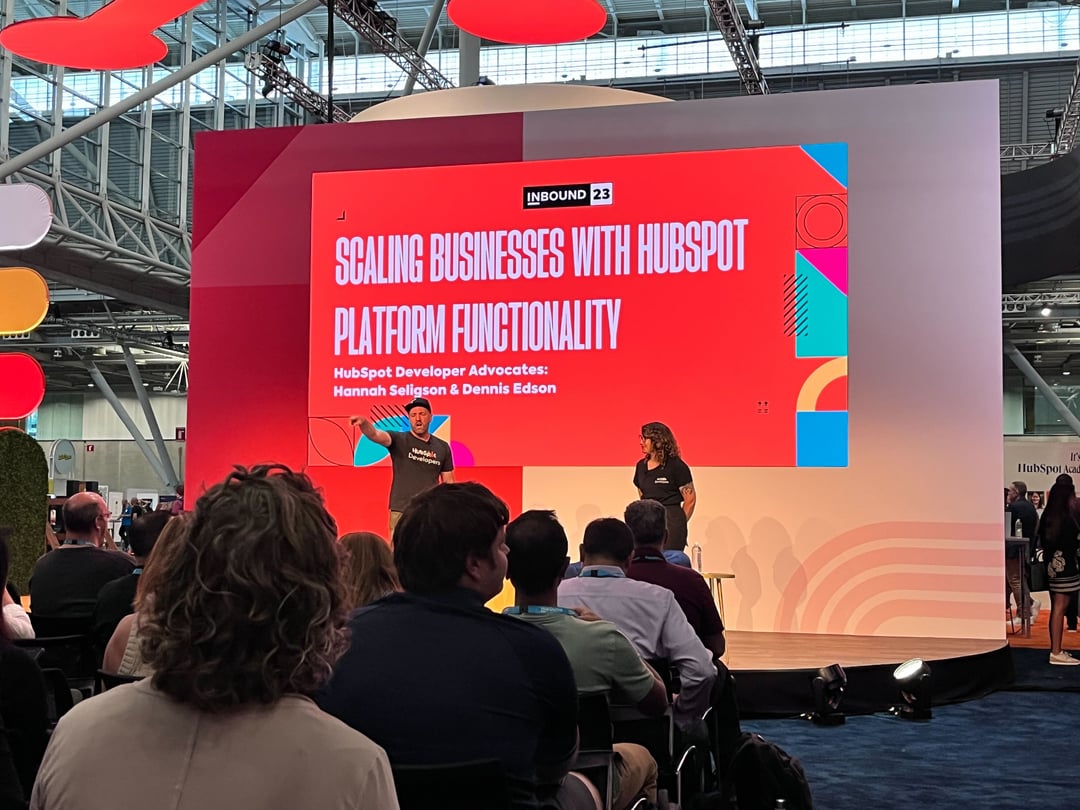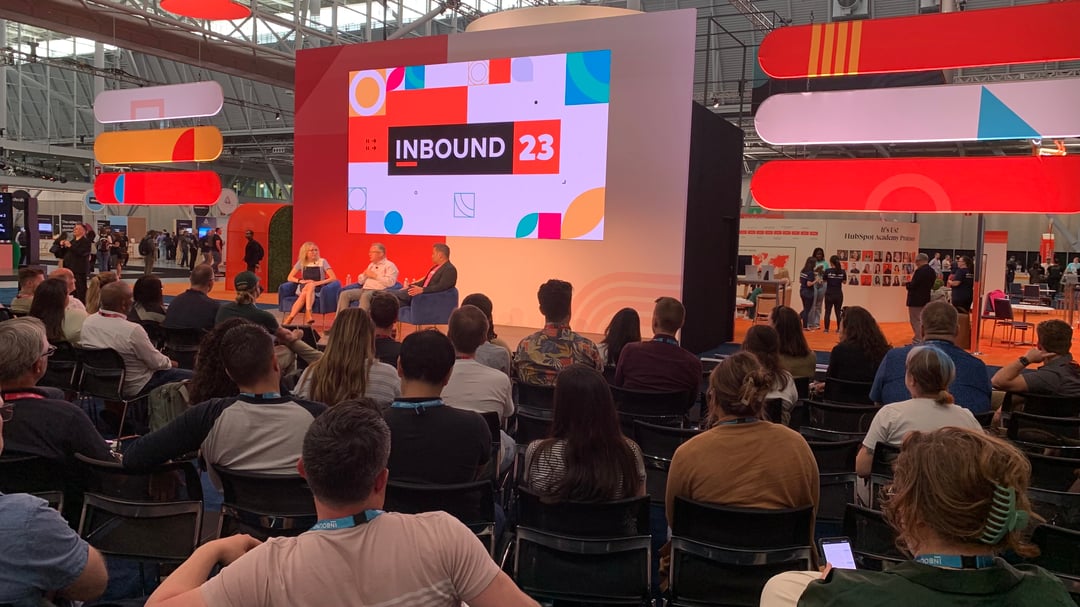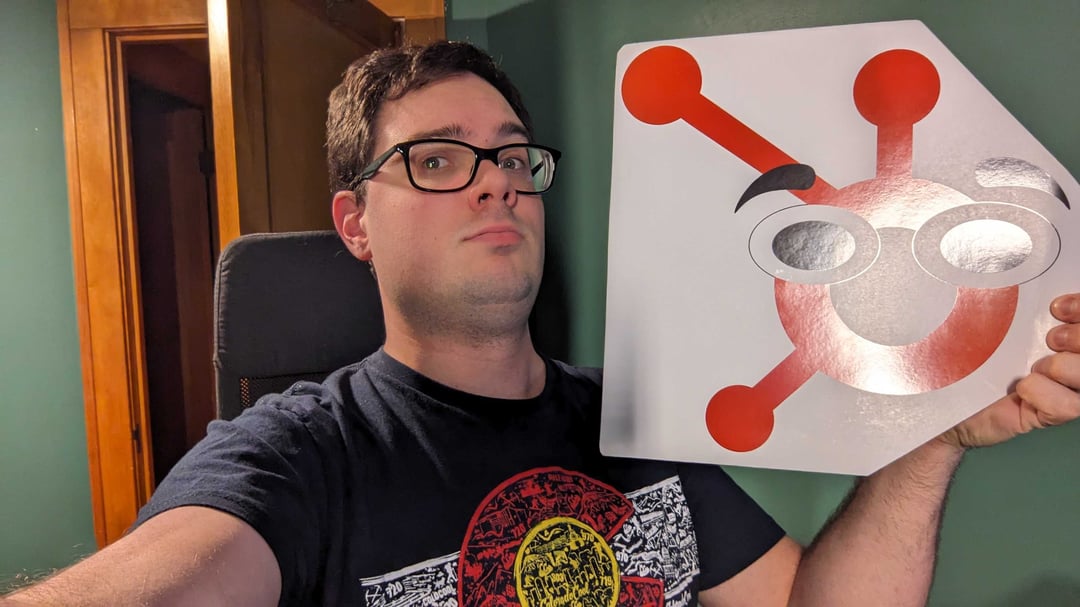Now that the dust has settled and we have all had a chance to recover from and reflect upon INBOUND 23, it is time to put to paper the developer experience at INBOUND. A lot of exciting things happened at INBOUND that we need to cover. We had developer sessions, a developer meetup and a lot of capes running around the conference center. I will recap all of that as well as muse on my favorite four things that were announced (and one that wasn’t).
First of all, let's just take a moment to appreciate that there was a developer experience at INBOUND 23. At Partner Day, Karen Ng, SVP of Product at HubSpot, spoke extensively about developers and how important they are to the quality and success of HubSpot. Believe it or not, “API” was actually used in her presentation! A tear may have slid down my cheek.
During the main event, we had four sessions geared toward the developer audience. Having been to several INBOUNDs and scrolling through the seemingly endless list of sessions, hoping to find some developer content, this was a very refreshing change and it was clear that I was not the only one who thought that. I spoke with several developers who expressed their gratitude for these developer-focused sessions and the size of the crowds surrounding the stage speaks for itself.
Across three of the four sessions, we delved deep into the marvels of CRM customization using UI extensibility. The message? It's time to seize control of how data looks and behaves in our HubSpot accounts. Bid adieu to the rigidity of JSON and embrace the flexibility of React.
If you are unfamiliar with UI extensibility in HubSpot, think of it as a means for you to take control of the data on CRM records. One can create custom cards displaying data from within HubSpot or external systems. We did have a method of building custom cards that was JSON-based, but it became clear that this approach was too static and did not offer enough flexibility to allow a developer to really push the limits of what can be done. What we arrived at was a React-based method that offers us a more flexible way of building these cards. This dynamic element is more engaging and helps simplify the flow of reading and editing the data directly from within the object record. We were also able to decouple the front end from the back end. Previously, serverless functions were a requirement for a custom card; now serverless functions are optional and additive. If you need to pull in data from an external source, this is an opportunity to use a serverless function. If you only need to better organize data within HubSpot, you might be able to do that with the front end React component alone. This just scratches the surface area of what is involved. If you are ready to see some examples, here is a repository on GitHub with examples. Check out what some developers have to say in this video.

Jon McLaren, Sr Developer Advocate at HubSpot, and Laurie Qian, Product Lead at HubSpot, were the first to present and had the pleasure of introducing UI extensibility. Laurie unpacked how not customizing your CRM is holding your business back. For example, assume a sales representative needs to pull data from several different systems to complete a task and that takes approximately three minutes per task. Three minutes does not sound like much, but if that sales rep performed that task 16 times per day, that adds up to around 208 hours per year. By having all of the data in HubSpot, you can easily cut that in half!
After Laurie made us all think about how much time we were wasting, Jon took the wheel and walked us through how to build a custom card from the very beginning with the HubSpot CLI to deploying your project in a sandbox. Jon has a talent for explaining development processes in a way that is approachable and will prevent you from crawling up in a ball under your desk in tears. Believe me. I have been relying on this guy to explain things to me for more years than I would like to admit.

Next, Hannah Selligson, Sr Developer Advocate at HubSpot, and myself created a fictional use case example starring Three Little Pigs Construction and walked through how the HubSpot platform scaled with them as their business grew and having an out-of-the-box approach no longer worked. We begin with a starter subscription and work our way to enterprise functionality, including custom objects that store construction projects, and a deal pipeline that employs a workflow with a custom coded action triggered when a deal is closed/won. It would create an Asana project that included all of the project details, reducing repetitive and error-prone data entry and a custom card that allowed the end user to quickly and easily interact with all of the relevant information from within HubSpot. We added all of our code into a repository on GitHub so anyone can mess around with it!
.png?width=1080&height=615&name=image%20(2).png)
Sejal Parikh, Sr Product Manager at HubSpot, and Kathrine Man, Product Lead at HubSpot, both key players in the creation of UI extensibility, presented next. This is the first session where customizing the center pane of a CRM record comes into play. With this feature, an admin can create views specific to teams. The sales team needs a set of cards that are different from the service team. With the Page editor customization, this is now possible and is shockingly easy to build to boot! Add whatever cards are appropriate to your team’s view. What do you do if the card you want doesn’t exist? You guessed it, BUILD ONE. Kathrine and Sejal deftly communicated how valuable this is, but if that was not enough, they included a case study from ViewRail which was an early adopter of the beta. The Viewrail case study painted the picture of how important this is for your business.

The last session was a fireside chat with Brian Gorbett, VP of Ecosystem at HubSpot, Scott Brinker, VP of Platform Ecosystem at HubSpot, and moderated by Kelly Sarabyn, Platform Ecosystem Advocate at HubSpot. Scott and Brian dove into the future of HubSpot as a platform and an ecosystem. They discussed the trajectory and prospects of the HubSpot platform and its ecosystem. Scott recounted the platform's expansive growth over half a decade, highlighting the pivotal role of early collaborators and the melding of tech and service associates. Brian, a recent addition to the HubSpot family, underscored the role of insights from partners and clientele in steering the platform. Both underscored the criticality of addressing customer challenges and guaranteeing top-notch integrations.
They also broached the subject of the HubSpot marketplace, zeroing in on maintaining the integrity and reliability of applications. The concept of being "crafted for HubSpot" came to light, indicating that while certain apps are HubSpot-centric, others have broader integrations yet remain essential for HubSpot enthusiasts. Both concur that the platform's horizon will perpetually be about enriching experiences for associates and end-users alike.
In the midst of all the tech talk, a particular Chrome extension mascot stole the limelight at a gathering at Democracy Brewery. Sprocky, a creation of Jon McLaren and Gonzalo Torreras, brought together developers and HubSpotters, reminding everyone of the fun and camaraderie that lies at the heart of HubSpot development.
Thanks to SJ Morris, Sr Manager of Developer Community at HubSpot, developers were given the opportunity to socialize with one another and, possibly more importantly, get to meet Sprocky. 69 Developers from the developer community and 34 HubSpotters convened at Democracy Brewery. Incredibly interesting conversations were had over a few pints of beer and some appetizers. It was a great opportunity to see the real-life faces of people who you may have only known via Slack or Zoom. The HubSpotters left excited with all of the feedback that was provided and Sprocky smiled contentedly throughout the entire event.
If you were worried about what happened to Sprocky after the meetup, worry not! Sprocky found a home with Jon McLaren.

There were a ton of things released at INBOUND and there is no way that I could do them all justice. If you want a good overview, I think this thread in the community forums is a great start. If you want to talk about AI, there are other places for that.
Here is what caught my eye:
- UI Extensibility (public beta). Let’s get the big one out of the way first. I already said a lot about this above, but it bears repeating. This is a huge win for developers. Being able to control what data is presented on a CRM record is going to open up so many interesting doors. I have already been blown away by what people have built.
And this is just the beginning! - Customize the Middle Pane of a CRM Record (public beta). I know this one is more admin-geared, but being able to add tabs to the center pane, rename the tabs, control what is in these custom tabs AND tailor the experience to fit perfectly for each of your teams? How can this not be on my list?
- Commerce Hub. This one went curiously under the radar. It was once a set of tools and has now been packaged up and is a hub. Invoices were a part of this launch as well. Again, this is all available in the UI, but as a developer, I would keep my eye on this space.
- Conditional properties (private beta). This feature is going to speed up admin work substantially. For example, If Department = Engineering, then for Role show only Engineering Manager, Engineer, and Director of Engineering.
As I said, there was one release that occurred that was not showcased at INBOUND, and I think it needs to be recognized. CMS JS Building Blocks is now available to all. With CMS JS Building Blocks, we are introducing a new way of building on the CMS. It departs from the traditional method of building on the CMS with HubL and instead uses Javascript and React. I highly encourage you to check out our GitHub repo as well as check out this video to learn more.
INBOUND 23 was a testament to how integral developers are to the evolving digital landscape. The focus on UI extensibility and the sessions geared towards CRM customization signified the importance of flexibility and adaptability in modern tech solutions.
The informal gatherings, chit-chats over drinks, and meeting familiar faces from Slack or Zoom in real life added the perfect personal touch to the event.
As we gear up for the INBOUND24, let's remember the lessons, innovations, and connections from this year. To all my fellow devs – keep the code clean, the spirits high, and the innovations coming. Until next time, may your code be bug-free and your coffee strong!